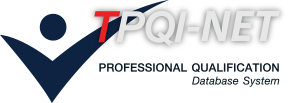หน่วยสมรรถนะ
Maintain basic light aircraft instrument systems and components.
สาขาวิชาชีพการบิน
รายละเอียดหน่วยสมรรถนะ
| 1. รหัสหน่วยสมรรถนะ | AVT-FTN-3-070ZA |
| 2. ชื่อหน่วยสมรรถนะ | Maintain basic light aircraft instrument systems and components. |
| 3. ทบทวนครั้งที่ | - / - |
| 4. สร้างใหม่ |
|
ปรับปรุง |
|
| 5. สำหรับชื่ออาชีพและรหัสอาชีพ (Occupational Classification) | |
|
|
|
| 6. คำอธิบายหน่วยสมรรถนะ (Description of Unit of Competency) | |
| This unit of competency requires the application of manual skills and the use of the knowledge system / components and equipment applicable to inspect, test and troubleshoot basic systems of aircraft instruments and to remove and install the components during maintenance test scheduled or unscheduled. The work can be done individually or as part of a team. Applications include fixed-wing aircraft with light rotorcraft and fixed train basic landing skids or floats and no flight controls motor powered by a piston engine normally aspirated or gas turbine small. | |
| 7. สำหรับระดับคุณวุฒิ |
| 1 | 2 | 3 | 4 | 5 | 6 | 7 | 8 |
|---|---|---|---|---|---|---|---|
| 8. กลุ่มอาชีพ (Sector) | |
| 10 Aircraft Mechanics | |
| 9. ชื่ออาชีพและรหัสอาชีพอื่นที่หน่วยสมรรถนะนี้สามารถใช้ได้ (ถ้ามี) | |
| 103 Aircraft Maintenance: Avionics | |
| 10. ข้อกำหนดหรือกฎระเบียบที่เกี่ยวข้อง (Licensing or Regulation Related) (ถ้ามี) | |
| ICAO Doc 7192 / EASA Part 66 | |
| 11. สมรรถนะย่อยและเกณฑ์การปฏิบัติงาน (Elements and Performance Criteria) |
| หน่วยสมรรถนะย่อย (EOC) | เกณฑ์ในการปฏิบัติงาน (Performance Criteria) | รหัส PC (ตามเล่มมาตรฐาน) |
รหัส PC (จากระบบ) |
|---|---|---|---|
| 103307.01 Inspect, test/adjust basic aircraft instrument systems and components. | 103307.01.01 Instrument system components are visually or physicallychecked for external signs of defects in accordance with applicablemaintenance manual | 103307.01.01 | 71246 |
| 103307.01 Inspect, test/adjust basic aircraft instrument systems and components. | 103307.01.02 Instrument system isfunctionally tested in accordance with maintenance manual for evidence ofserviceability or malfunction. | 103307.01.02 | 71247 |
| 103307.02 Troubleshoot, remove and install basic aircraft instrument systems and components. | 103307.02.01 Basic aircraft instruments causes of faults are clearlyidentified and recorded properly in the maintenance documentation, asnecessary, in according to standard procedures for companies | 103307.02.01 | 71248 |
| 103307.02 Troubleshoot, remove and install basic aircraft instrument systems and components. | 103307.02.02 The physical removaland installation of the components of the instrument was performed inaccordance with the maintenance manual and applicable regulatoryrequirements, ensuring proper adjustment / adaptation isperformed. | 103307.02.02 | 71249 |
| 12. ความรู้และทักษะก่อนหน้าที่จำเป็น (Pre-requisite Skill & Knowledge) | |
|
|
|
| 13. ทักษะและความรู้ที่ต้องการ (Required Skills and Knowledge) | |
|
(ก) ความต้องการด้านทักษะ
(ข) ความต้องการด้านความรู้
|
|
| 14. หลักฐานที่ต้องการ (Evidence Guide) | |
|
Assessment methods |
|
| 15. ขอบเขต (Range Statement) | |
|
N/A |
|
| 16. หน่วยสมรรถนะร่วม (ถ้ามี) | |
| N/A | |
| 17. อุตสาหกรรมร่วม/กลุ่มอาชีพร่วม (ถ้ามี) | |
| N/A | |
| 18. รายละเอียดกระบวนการและวิธีการประเมิน (Assessment Description and Procedure) | |
|
• Assessors must satisfy the requirements of the National Vocational Education and Training Regulator. |
|
